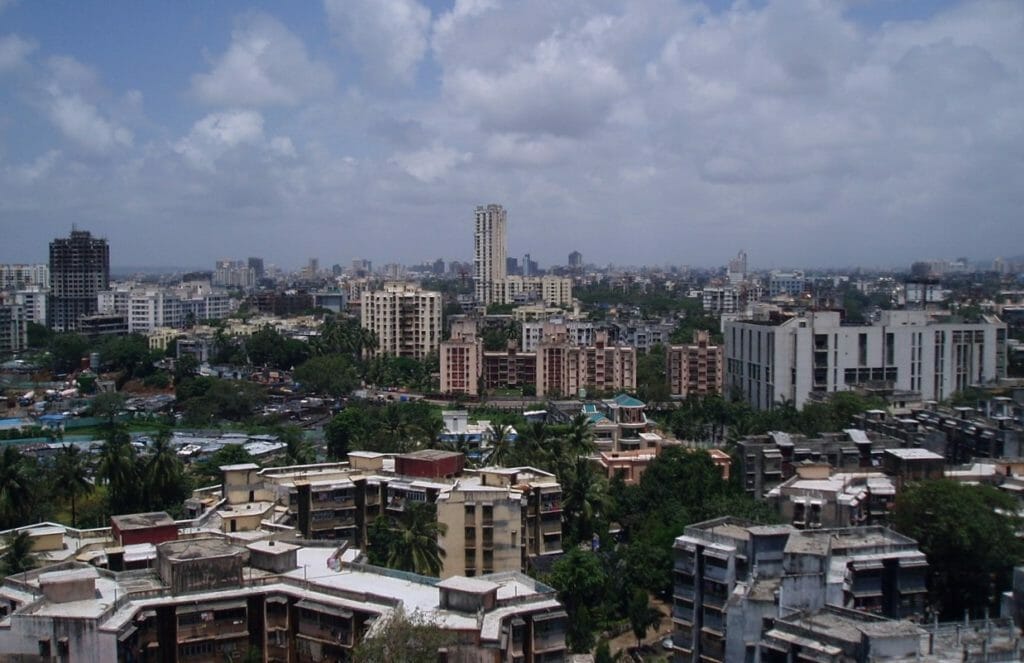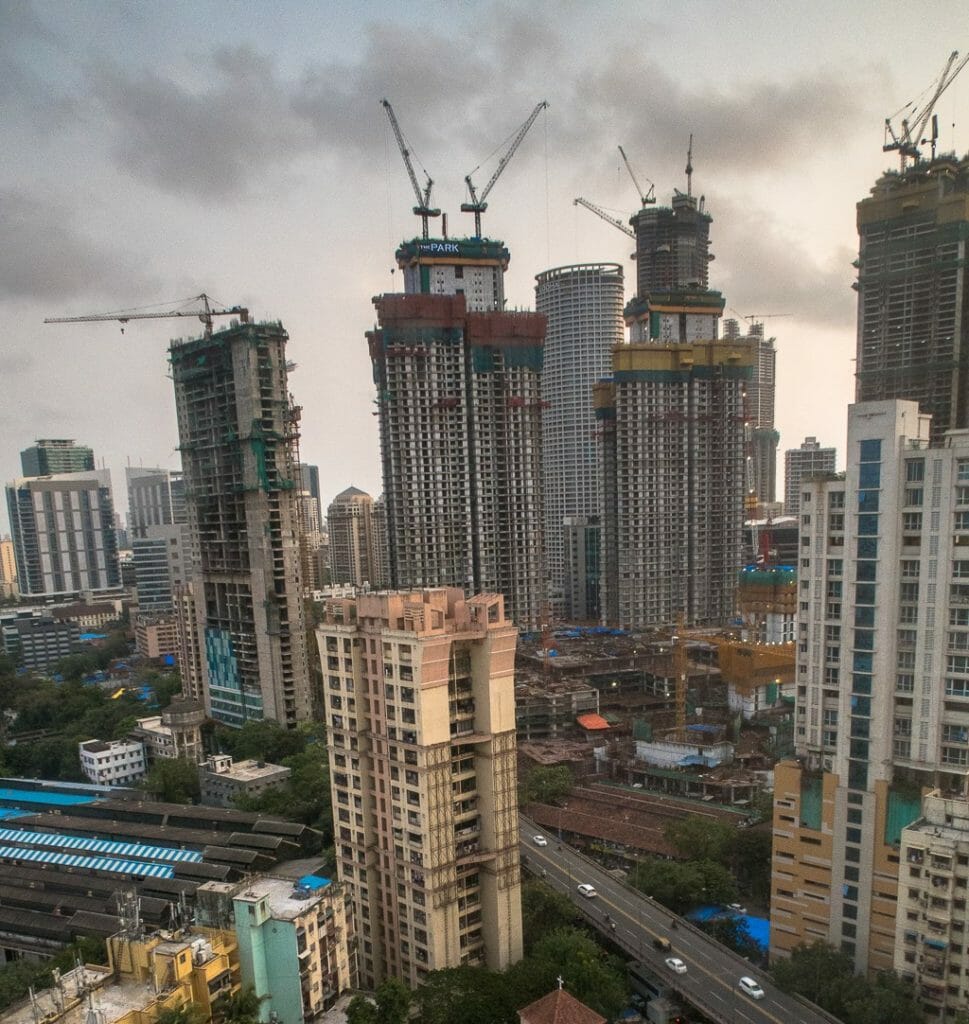Land is scarce in Mumbai. The island city to the south, an island only in name, is surrounded by the sea on all but one side. Towards the north, it is bordered by the neighbouring city of Thane. With such space constraints, to accommodate a population of 12 million, there is only one-way housing can go, and that is up.
How much housing can be built is thus less determined by land than by the amount of floor space, multiplied when the number of floors in a building reaches greater heights. This is controlled by the Floor Space Index, or FSI, set by the Brihanmumbai Municipal Corporation (BMC) and Maharashtra government. Currently, the base FSI in Mumbai is set at 2.5 in the suburbs and 3 in the city.
But far from determining the height of buildings in a clear-cut manner, FSI in Mumbai works and affects housing in various roundabout ways. It mingles with other policies and building regulations, leveraged by the government for slum redevelopment and social ends and by builders to increase profit. As a result, the effective FSI used by most buildings is often greater than what is prescribed, even going higher than 10.
To understand how this works in action, Citizen Matters spoke to Sukriti Issar, associate professor of sociology at Sciences Po, Paris, and scientific director of the Governing the Large Metropolis master’s programme. She has written extensively on building regulations, formal and informal housing, urban governance and policy – particularly looking at the case of Mumbai.
Below is an edited interview with her.

How would you explain FSI to a layman? Is it unique to Mumbai?
FSI is an urban planning tool that determines the bulk, or volume, of a building. It is common across the world under different names, e.g. floor area ratio (FAR) in the US, or coefficient de’occupation des sols in France. While it is often interpreted as a height restriction, it is more accurate to see it as deciding the volume of a building. The FSI of a building is the ratio of the total built-up area to the plot area.
To picture this, let’s consider an FSI of 1 – if a city has an FSI of 1, then on a plot with no open space, only one floor can be built. If half the plot is kept as open space, two floors can be built. In this way, FSI is not determining the number of floors or height of the building, but the amount of floor space that can be built.
Historically, most of Mumbai had a low FSI of 1 in the suburbs and 1.33 over most of the city. But over the last half a century, FSI has become a flexible and financialised instrument in Mumbai.
What are the consequences of a very low or high FSI?
Technically, a low FSI is seen as a restrictive regulation and a high FSI as a liberal. The FSI levels in a city are, in theory, related to urban density, housing prices and housing supply. But in practice, other policies, floor space consumption per person, and the demographics and history of a city interact with the level of FSI to influence housing supply and urban form.
As an example, a high FSI is considered to result in a higher population or higher density. But in Mumbai, it has been found that FSI and density are not connected. More and more floor space has been constructed in the last two decades in the Island City, but the population has not increased and prices have skyrocketed. So, the relation of FSI to the urban housing market is difficult to pin down.
Mumbai has its own history of the evolution of FSI. What did it start out as?
Control over building heights started very early in Mumbai — as early as the mid-1700s — as a simple standard, i.e. you can only build up to x metres or x floors. The colonial government renewed its attention to building heights from time to time, for example, after the fire of 1803, or due to public health concerns in the late 1800s.
It emerged in its modern form, as FSI, in the late 1950s; the key moment being 1964 when the 1.33 number was decided.
Over time, however, the government started granting FSI individually as incentives for urban development goals. It developed into a flexible and hybrid policy that combines the standard (in metres or floors), extra FSI that developers could pay for, government concessions, and tradable rights. The key historical event that financialised FSI in Mumbai was the introduction of Transferable Development Rights (TDR) in 1991.

What is TDR, and how does it function?
TDR is a type of credit that is generated when state-mandated urban development activities are carried out. For example, say a developer builds ‘slum’ redevelopment apartments. The government will then award a certificate of development rights (DR) to the developer instead of payment. These DRs can then be used as extra FSI either on the same plot, on the developer’s other projects, or can be sold for cash in the TDR market.
Read more: Why ‘affordable housing’ is just a myth in Mumbai today
The BMC attempts to use FSI incentives and TDR as a bounty for slum redevelopment. How does this work out in practice?
Because FSI in Mumbai is low, the government can use different types of TDR as incentives. If a builder gives up land reserved for other purposes in the Development Plan, they will generate ‘reservation TDR’. If a developer takes up a slum redevelopment project, they generate ‘slum TDR’.
In 2018, the government brought in a requirement that 20% of TDR used in every project had to be slum TDR, motivating slum redevelopment. All slum redevelopment projects use various subsidies, concessions and incentive FSI from the government.
The general consensus on the slum redevelopment process is that it works, but slowly. Even in other countries, it’s generally agreed that it’s difficult to build low-income houses without government intervention.

How do all these factors affect the housing market in the city?
That is the million-rupee question! We don’t have good data that cuts across time and is at a small spatial scale. And we don’t have good measures of the way that FSI interacts with all the other policies, including concessions, premiums and TDR.
Does it affect the size of new houses built?
FSI policy does affect the size of new houses, but in different ways. For instance, the redevelopment of slums in Mumbai is linked to FSI and TDR policy. These are small flats where former ‘slum-dwellers’ are settled. The congestion and building boom in some areas such as Juhu or Khar has been related to TDR policy — these, however, are more middle-class or upper-class flats and developments. As FSI premiums are a part of government revenue, Mumbai residents might be affected by them in ways they are not even aware of (e.g. through infrastructure spending).
There are conflicting opinions on FSI, while some argue for deregulation, there have been protests against the FSI increase proposed by the Development Plan 2015. What are your thoughts on it?
FSI has a complicated politics in Mumbai. Whether we decide in favour of deregulation or not, we must remember that FSI is not just a single number (FSI of 1.33 or 3.5 or 8) but is a hybrid policy that links up with other policies (TDR, premiums, etc). So a discussion of deregulation must specify ‘deregulation of what’. Those against FSI increases must realise that the practical effect of a higher FSI can be achieved without changing the base FSI. Citizens should know the intricacies of FSI policy so that they can make informed decisions.